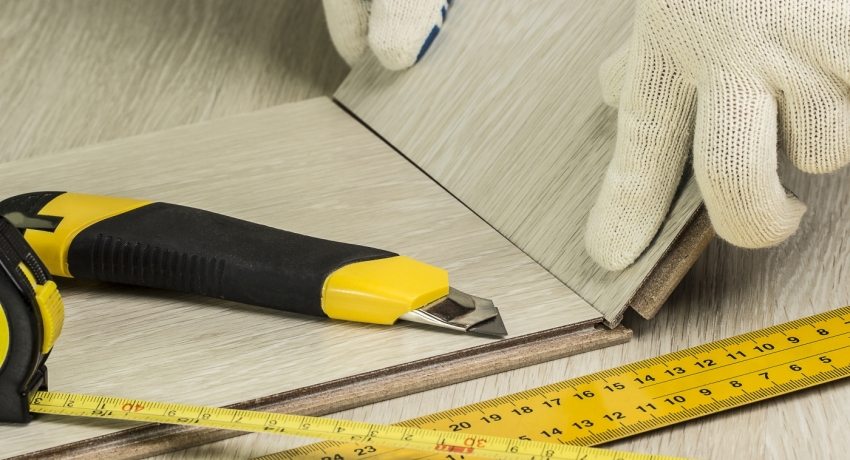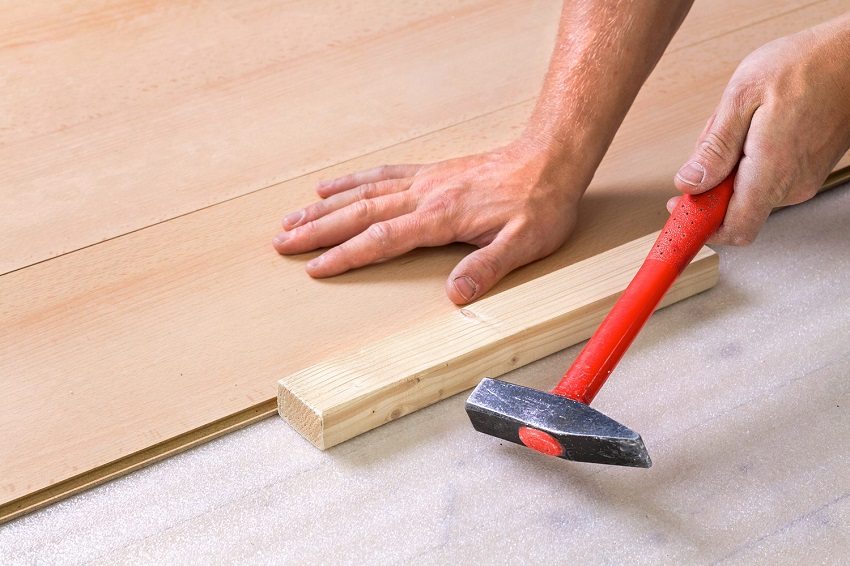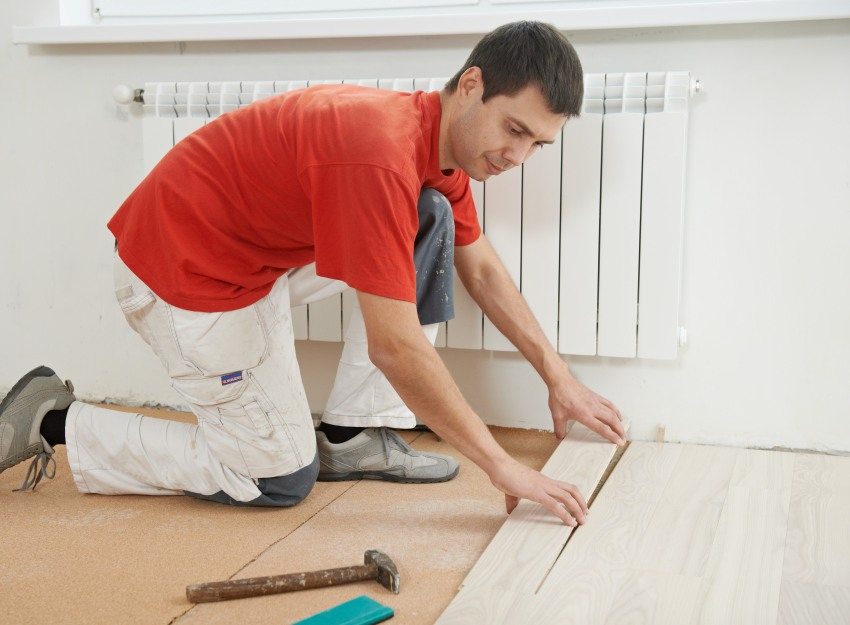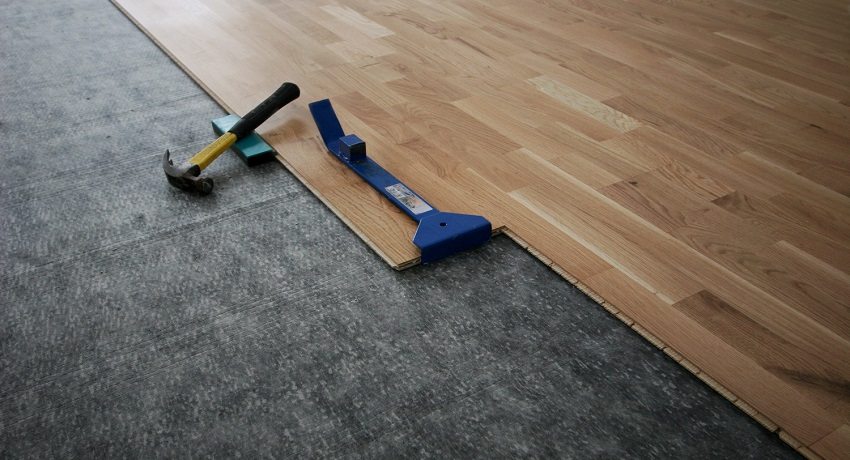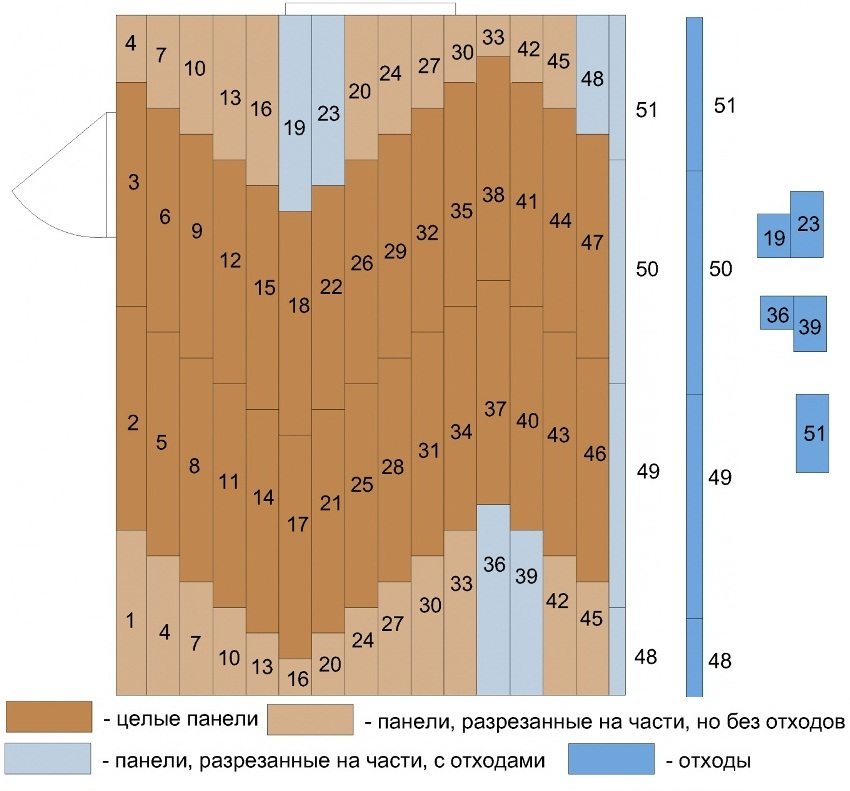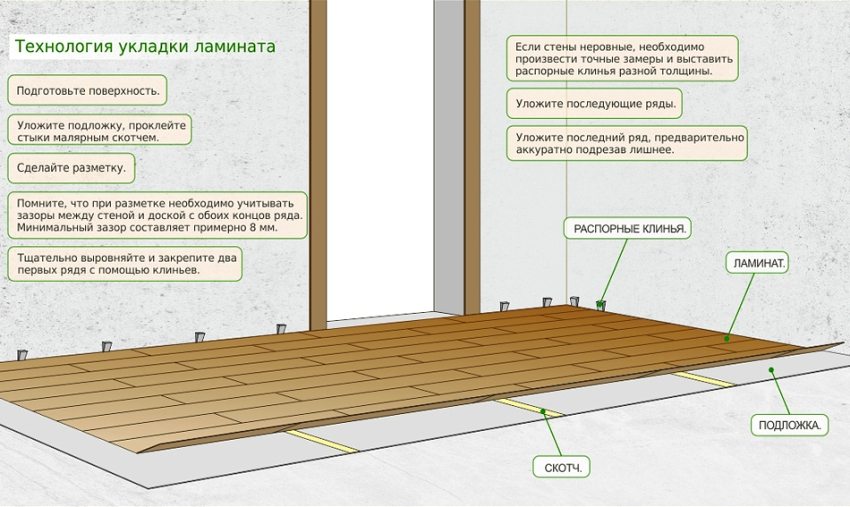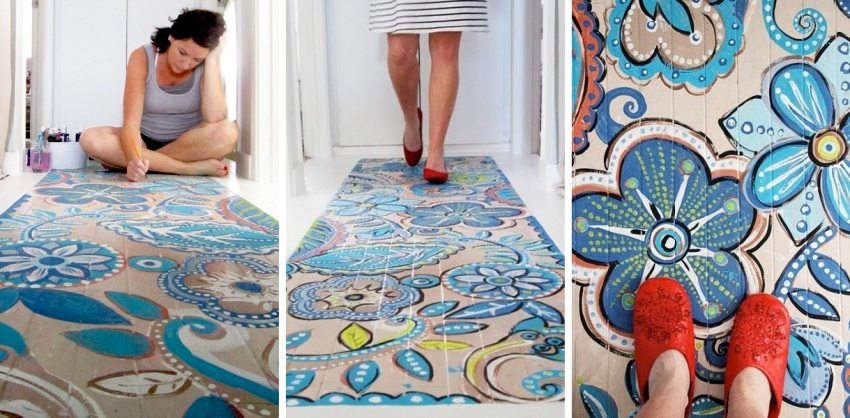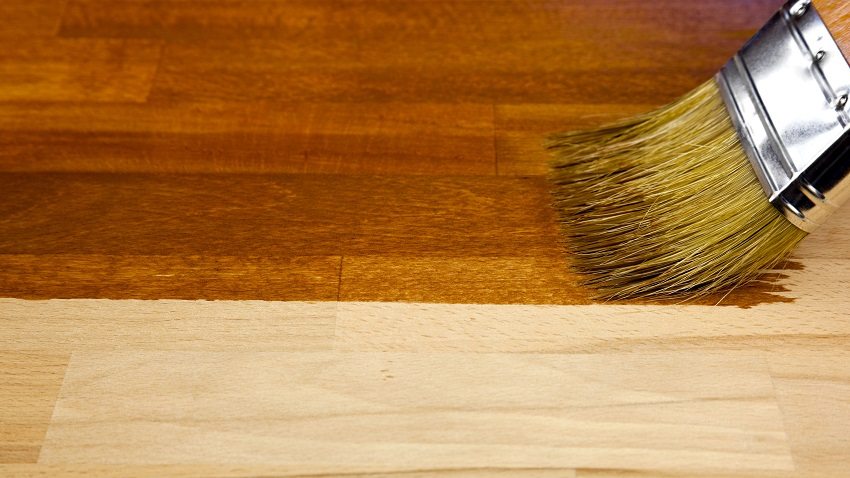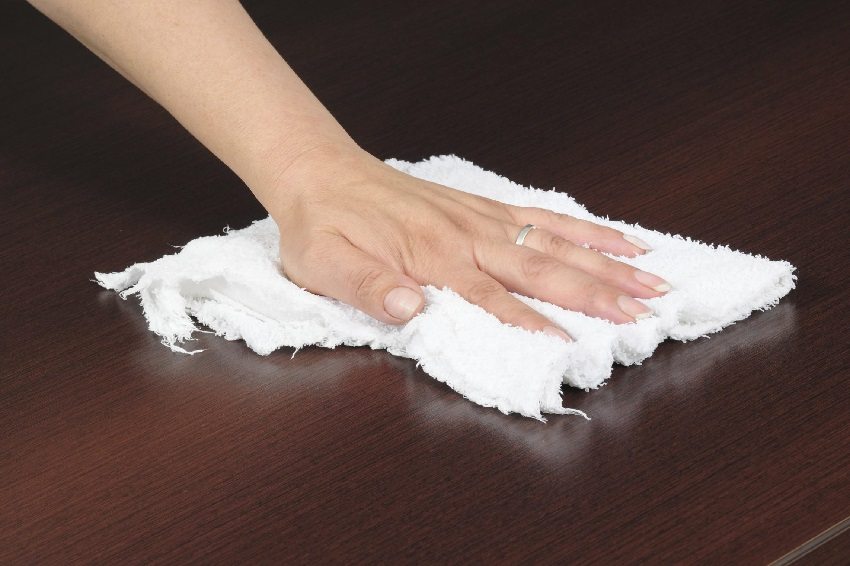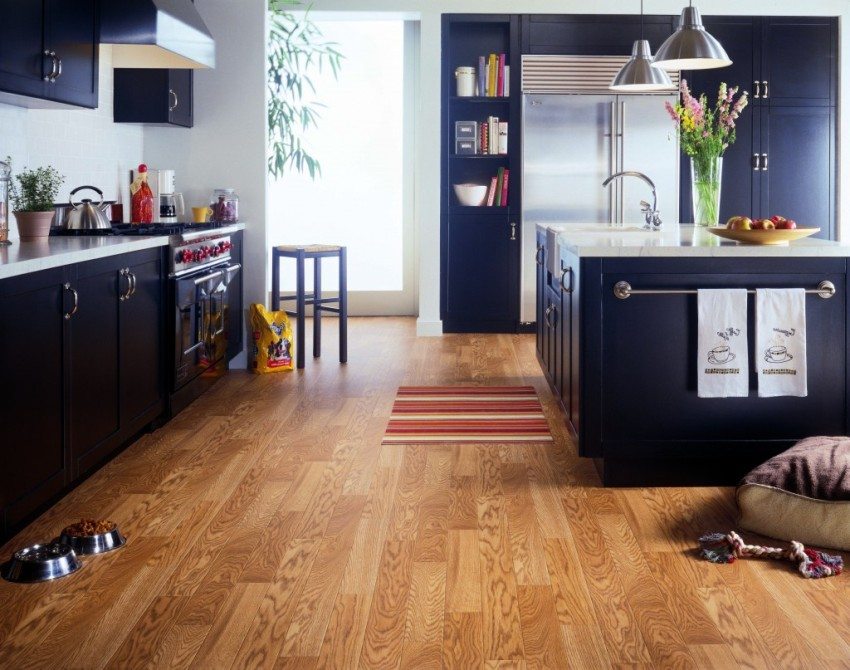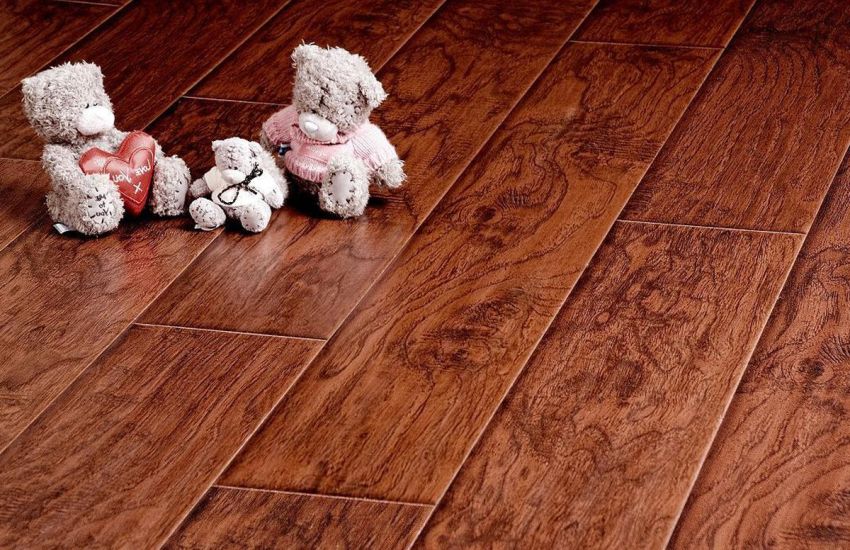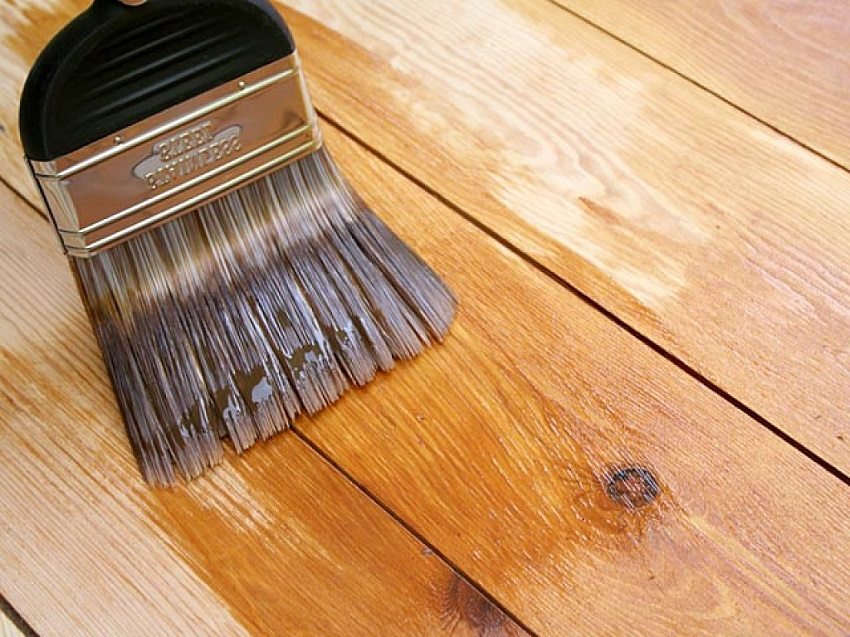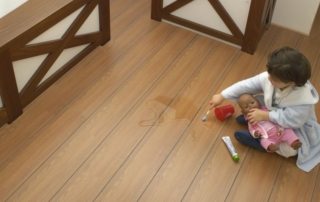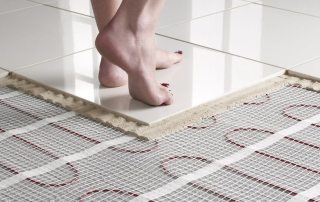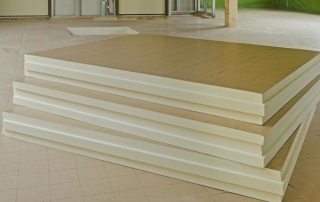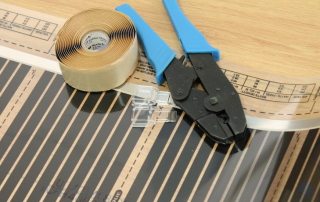Laminate is a demanding material that requires the preparation of a perfectly flat and smooth base. But is the layer of the old floor a suitable base and can the laminate be laid on top of the laminate? Consider what the consequences of such a combination can be, and what can be done if your old laminated flooring has lost its presentable appearance.
Content [Hide]
Can laminate flooring be laid on top of laminate flooring?
There is no unequivocal prohibition that would argue that it is impossible to put laminate on laminate flooring. However, in order to understand all the difficulties that you may have to face, let's recall the basic requirements for laying laminate flooring:
- the surface, which serves as the basis for laying laminated panels, should be as flat as possible. If the differences in height are acceptable, then only within 1-2 mm for each square meter;
- quality substrate with good sound and heat insulating properties - a prerequisite laying laminate;
- reliable protection against the appearance of fungi at the joints can only be provided by treatment with special antiseptic agents.
If you decide to lay your laminate on top of an old laminate, can all of these requirements be met? Yes, but provided that the old coating, which remains below, is well preserved, has no visible gaps, damage to the locks and panels, and foci of fungus. In this case, the question arises: why then lay a new coating?
It all depends on your wishes. Perhaps you just want to update your interior. But, in any case, if the old laminate does not meet at least one of the requirements put forward, the coating must be dismantled. Otherwise, very soon both layers of the laminate will become unusable.
Is it possible to put laminate on laminate and how to do it
Obviously, if you put a new layer laminate in the same way that the old coating was laid, then all irregularities, defects and distortions will not be smoothed out, but only on the contrary will intensify. Accordingly, the coverage will be unreliable, or, as it is also called, "playing". In order to smooth out this effect as much as possible, it is recommended to lay the panels in the direction perpendicular to the old one. It's best to watch a video tutorial here: how to lay laminate flooring on top of another coating.
Naturally, such work, first of all, will negatively affect the height of the room.After all, each new coating layer raises the floor, which can become a serious obstacle in small apartments. But if the height of the ceilings in your home allows for such a waste of space, then based on a full assessment of the condition of the old laminate, you can decide on its suitability for use as a base.
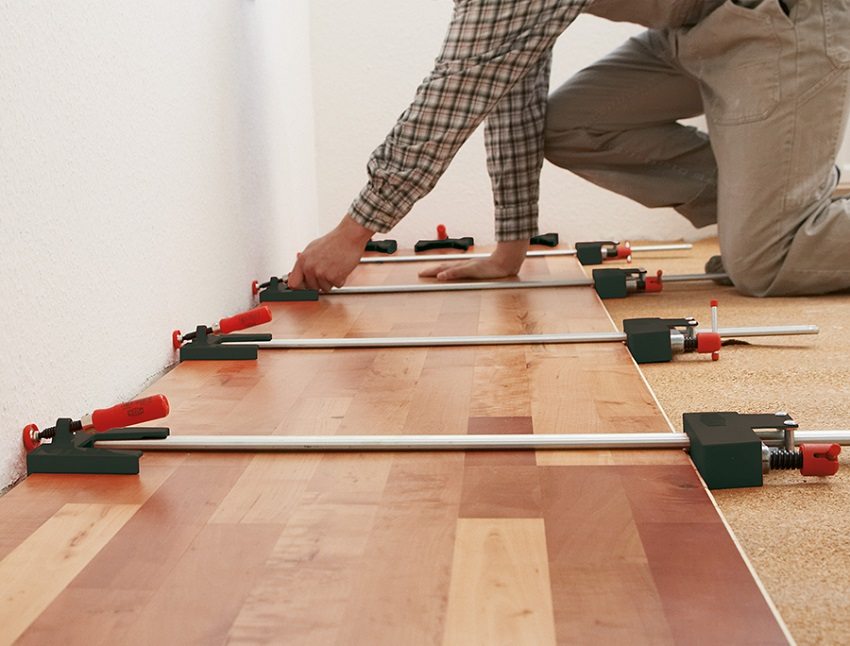
Tools are needed not only for laying laminatebut also for preparatory work
Helpful advice! In addition to assessing the quality of the coating itself, it will be useful to convince the integrity of the substrate. The further functionality of the coating will largely depend on its condition.
It is important to understand that all of the above recommendations can only be used if we are talking about a laminate with a lock connection. Obviously, having once planted the panels on glue, it will be impossible to check the condition of the substrate without dismantling the old floor. Therefore, in such cases, a different technology is used: another layer of heat and waterproofing material is laid between the new and old laminate. This is the only way to provide yourself with quality flooring. Of course, provided that the bottom layer is in good condition.
When laying another layer using the adhesive method of fastening, you also have to take care of the fact that the two layers of coating must be reliably separated from each other. This will entail additional costs, but there is simply no other way to resolve this issue.
Related article:
What is the best substrate for the laminate: types, properties and technical characteristics. Material selection criteria. Varieties of substrates. How to do it yourself. Rating of the 5 best manufacturing firms.
Can laminate flooring be laid on laminate flooring without a backing? You can't. Between the layers, there must be a high-quality material that can fill the void that forms between the panels and create additional insulation.
How to lay laminate flooring
If the old coating meets all the requirements put forward for the base for the new laminate, does not have irregularities, defects and damage, then in most cases the laying of the top layer will not differ much from the usual installation technology.
Usually laying laminate produce, starting from the location of the window in the room. Sunlight should fall parallel to the seams and the window opening should be perpendicular to the panels. This method is considered to be the simplest and most convenient. But what if you are laying the second layer? Where to start laying laminate flooring in this case?
In which direction to lay the laminate - depends primarily on the initial data that are already available. The question of how to lay the laminate: along or across the original coating, has never been controversial. All experts, as one, agree that the directions of laying the two layers should be different. This will help compensate for existing irregularities and distribute the impending load as evenly as possible over the entire surface.
Helpful advice! Before laying laminate flooring along or across the room, pay attention to how to lay the laminate diagonally. This method, although more difficult to edit, looks great and is well suited for combining layers.
Can laminate flooring be painted
Another option to rehabilitate an old laminate that has ceased to suit you with its appearance is to repaint it in a different color. Can laminate flooring be painted? Yes, you can, you just need to do it taking into account some of the features of this material. You can't just pick up a paintbrush and renew old panels with floor paint.Let's consider how you can return it to its attractive appearance without compromising its technical characteristics.
Everyone knows that the main disadvantage of laminate is water permeability. And this is the first thing to be considered in the process of painting the coating. The structure of the panels is designed in such a way that when water gets on the surface, it absorbs it quickly enough. This has an extremely negative effect on the laminate itself. To prevent this from happening when you start applying paint, you need to choose the right material.
The most suitable paint for the laminate is considered to be alkyd or polyurethane compounds. Due to their ability to form a film on the surface, they are best suited for use in such cases. However, before starting work, it is necessary to check the compatibility of the natural protective layer of the panels and the paint components.
Helpful advice! The film formed on the surface of the laminate as a result of staining must be durable. Otherwise, soon it will simply be ripped off under the influence of mechanical factors.
The first thing to start with preparing the old coating for painting is the ideal cleaning of the surface from all kinds of dust and small particles of debris. This is necessary to ensure that no damage or scratches remain during the sanding process. Why do you need to sand the surface? This is a mandatory step, which ensures high-quality adhesion of the paint to the laminate and prevents it from further slipping in one layer. So it is not recommended to skip this step.
When the sanding process is complete, you will have another cleanup. Remove any dust formed on the surface with a damp sponge and allow the surface to dry completely.
Helpful advice! To protect the walls from possible paint drip contamination, use a wide-area construction tape.
When the floor surface is completely dry and clean, you can start applying the primer. It is best to use an oil-based solution. After applying an even layer, wait until it dries completely. After that, you can start painting. To fix the paint, experts recommend using a polyurethane sealant, applying it in an even layer over the entire floor surface.
Is it possible to varnish the laminate
Laminate is considered a relatively stable coating when it comes to the impact of various kinds of mechanical factors. However, over time, scratches will still appear, no matter how hard you try. Therefore, in order to avoid this, in practice, a protection method was tested, involving the application of varnish to the laminate. We will try to figure out how effective this method is, and whether it is worth using it in your home.
Arguments against varnishing laminate flooring:
- according to the classical technology of applying varnish to wooden surfaces, there should be several layers. And the first one must be absorbed in order to ensure reliable adhesion of varnish and wood. But the technology for the manufacture of laminate provides for the complete elimination of pores into which this or that liquid can penetrate. As a result, the varnish applied to the laminate does not absorb, but remains completely on its surface. Over time, this can lead to cracks and damage;
- when using a floating installation method, a certain movement of the panels relative to each other is allowed. Over time, at the joints where the panels are not fixed, the varnish can be damaged and cracked.
From all this, we can conclude that the laminate can be varnished, but only if it was laid perfectly smoothly and evenly.
The choice of the varnish itself plays a significant role. Do not expect that you will be able to use the usual compound recommended for wood flooring. It is better to choose an option based on polyurethane or acrylic. But there are also options designed specifically for laminate flooring. Their composition reliably strengthens the surface, preventing scratches and damage.
Preparing to varnish your laminate is a lot like painting advice. The result of your work is a clean, dry and even surface. It is unacceptable to clean the surface with sandpaper. And other methods of wood processing are not suitable for laminate. All you can do is use a special paste that will help hide visible surface imperfections.
The varnish should be applied directly with a wide soft brush or a special roller. It is better to start from the corner of the room, gradually moving towards the exit. The applied layer will dry very quickly, so try to be precise and avoid mistakes.
Thus, all of the above exactly answers the question of whether it is possible to lay laminate on laminate? With a substrate - you can. In addition, there are many other options for upgrading laminate flooring. Laminate can be painted or varnished, thereby significantly reducing repair costs.
